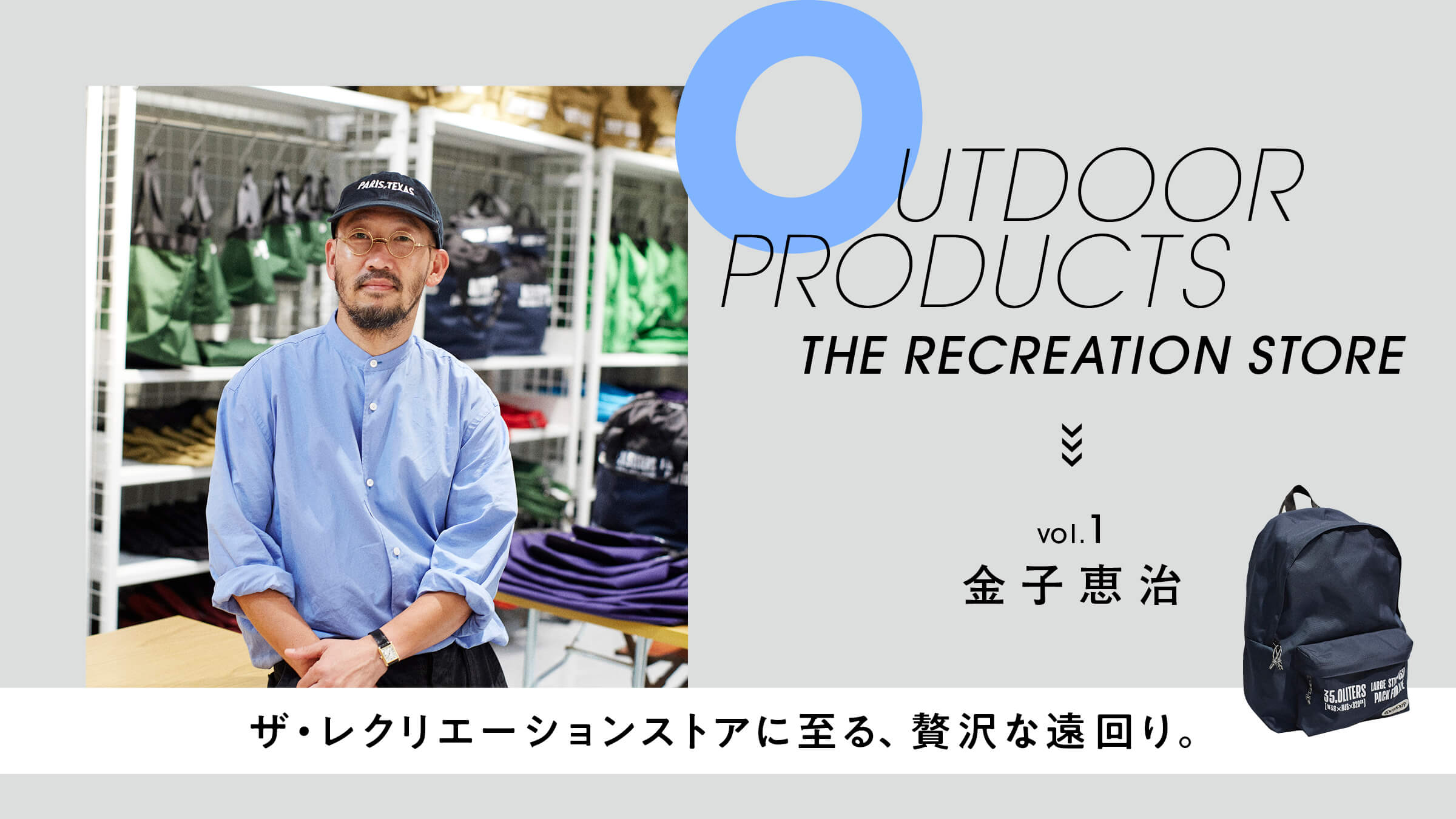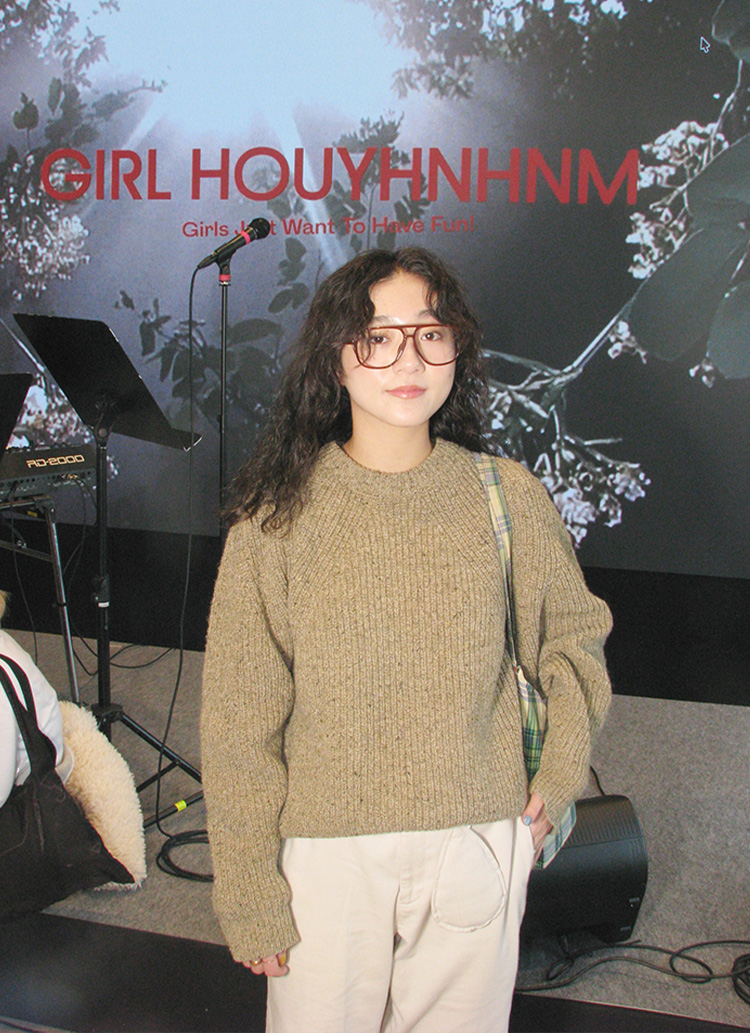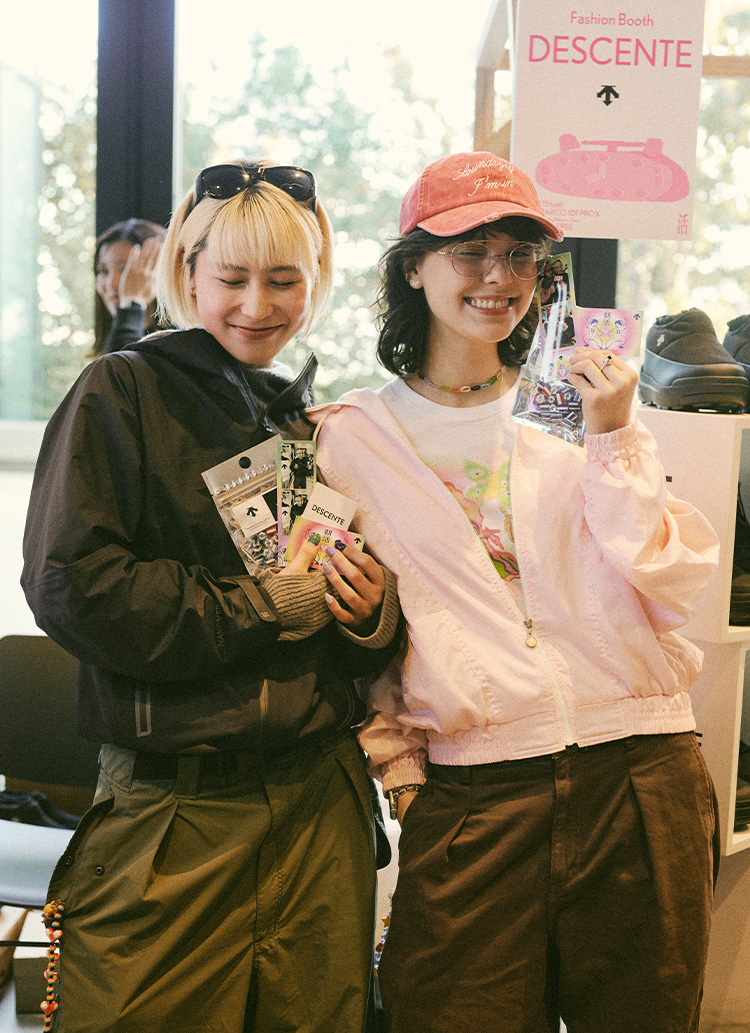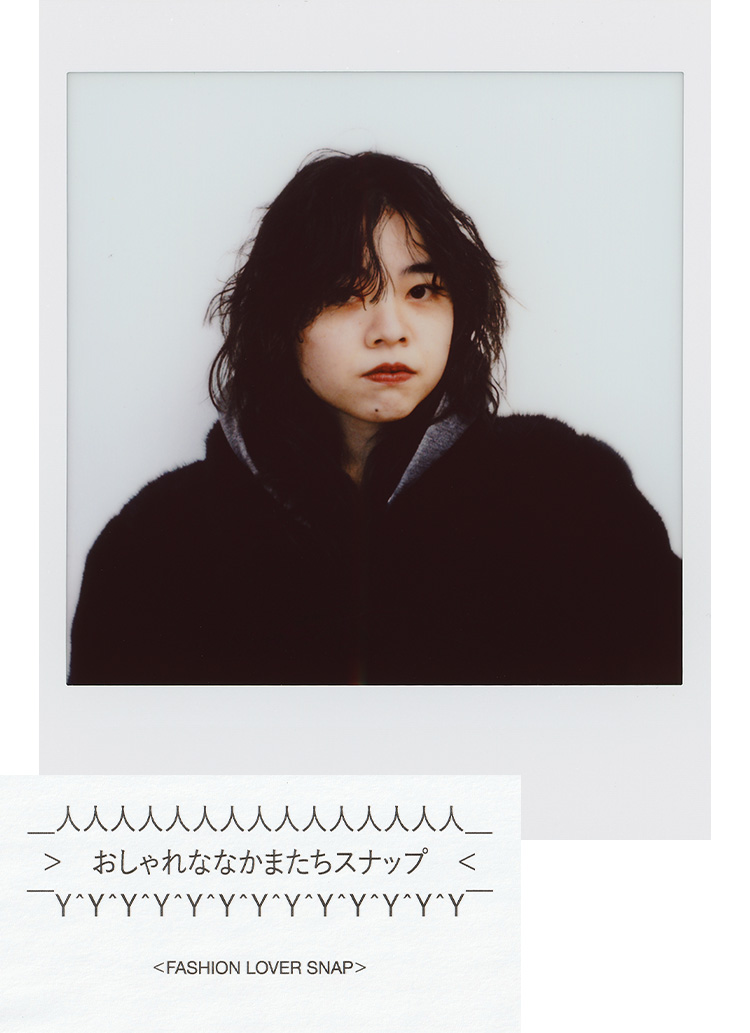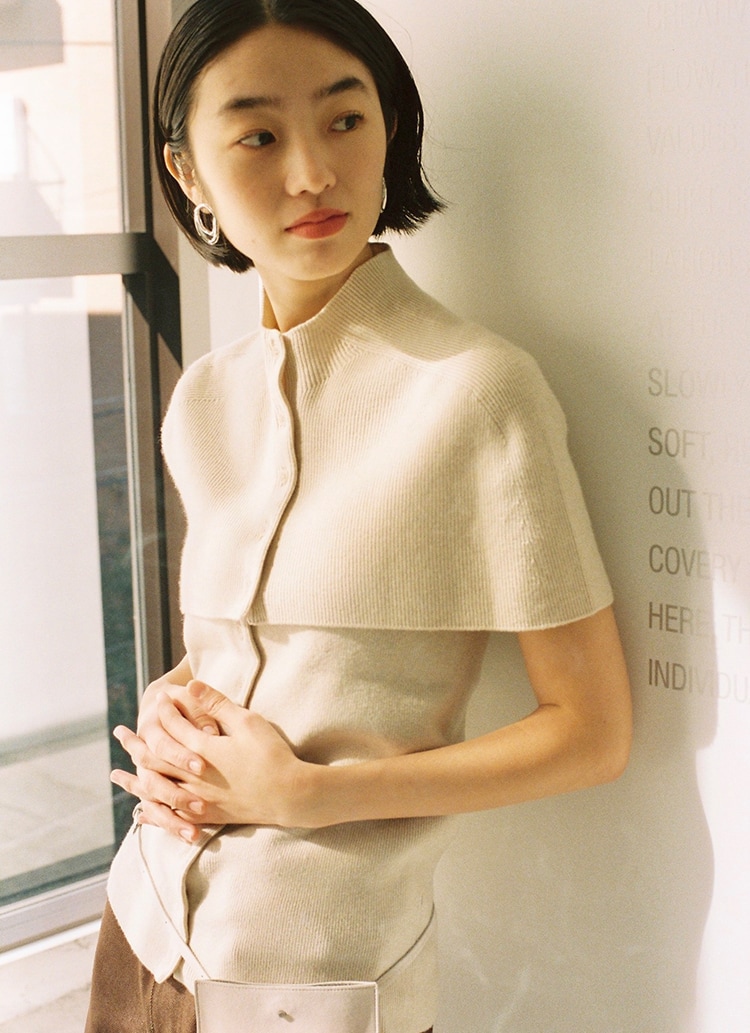Three key words that came to mind as we reexamined the situation.
How exactly did you direct the project?
Kaneko: Outdoor Products offered to represent the brand in a single location, so I thought I needed to know more about the brand in order to embody that offer. I had collaborated with the brand several times before, but I decided to delve into the history of the brand once again. By coincidence, I was born in 1973, the same year as myself. I was given archival materials such as catalogs and TV commercials from when the brand was founded, and I studied a lot with them. I was able to see the outline of the brand.
Can you give us a brief history of "Outdoor Products"?
Kaneko: The father of the Altschul brothers, who later became the founders of the company, owned a department store in Los Angeles, which was an outdoor store for professional users such as mountain climbers. The Altschul brothers thought it would be a good idea to offer "simple," "inexpensive," and "durable" products that could be used casually by outdoor enthusiasts who came to the store. They thought it would be a good idea to have "simple," "inexpensive," and "durable" products that could be used by outdoor enthusiasts who came to the store, and started making products.
Kaneko: From this point of view, we thought it was important for the products to be familiar tools, rather than to evolve into gears with various functions. That is why we thought it was important to embody the three points of "simple, low-priced, and tough" in the new flagship store. While preserving these brand philosophies, I wondered how to cook them up into something that would be appropriate for 2021. ...... In pursuing this, we came to the conclusion that there was no need to do anything particularly unusual. Of course, lifestyles are different now than they were in the past, so we had to find a balance between the two, but the conclusion we reached was surprisingly simple.

This "colossal size" Boston bag is large enough to hold one person. It was inspired by the bags used to hold deer caught during hunting.
Certainly, our lifestyles themselves have changed, with people nowadays carrying around computers and having smartphones as a matter of course.
Kaneko: Yes, we do. Also, "Outdoor Products" has been vigorously developing collaborations with other companies. That's why we also placed importance on collaborations with other companies. It is also essential to consider current trends of the time. For example, the camping population has been increasing recently, so we made products specifically for camping, and we were also conscious of "seasonality.
So the three keywords of "simple tools for daily use," "collaboration," and "seasonal" have all come to the surface for you, haven't they? I see that these three key words "simple tools for daily use," "collaboration," and "seasonal" have emerged easily in your mind.
Kaneko: That's right. That is why the new flagship store will have three floors (basement, first floor, and second floor), and each floor will have its own keywords.
I see! How is the floor organized?
Kaneko: The first floor features basic items that are "simple tools for everyday use. The second floor will have a "seasonal" theme, featuring trendy items and clothing. The second floor will have a "seasonal" theme with trendy items and clothing. The first basement floor will mainly feature "collaboration" items.

Workwear-based garments arranged in a modern silhouette. The itchy design can only be achieved by Mr. Murakami of "blurhms.

Not only bags, but also pouches and other goods are designed by Mr. Hayasaki of TEMBEA. The result is truly a "beauty for use.
Naturally, all three floors are Outdoor Products stores, but they are organized like specialty stores, each with a different look.
Kaneko: Outdoor Products" is so widely distributed that it could be said to target all age groups in Japan. For example, if you showed this bag to someone who came across it at a jeans retailer, they would not immediately recognize the collaboration item and would be surprised. That is why we divided the floor into two sections: the first floor is for inline items and the basement is for collaboration items. In this way, it was necessary to organize the floors in such a way as to link the customer base and their needs in a single "box.
It seems like you carefully built up the basics one by one.
Kaneko: Yes, I do. Once I had a plot in my mind, I needed members to help me realize it. For this project, I called on people who understand fashion and product design. Atsushi Hayasaki, designer of Tenbea, designed the bags, Keigo Murakami of Blurhms designed the clothing, and Naomi Hirabayashi designed the logo. The logo design was done by Naomi Hirabayashi, and the visuals were designed by Haruhisa Shirayama, a stylist. We thought through every detail of the project and put it together as a team without compromise.

Q: Why did you ask people from outside the company, rather than the staff of BAYCREW'S, which has been involved in a number of stores?
Kaneko: The Recreation Store" is not so different from my initial vision. I had a goal that I wanted to achieve, and if I had taken the shortest route to that goal, it could have been achieved by our own staff. However, by including the viewpoint of a professional active on the front lines, I think I was able to achieve overwhelming persuasiveness. It was as if they responded to my question by saying, "This is what a simple product is all about. At that moment, I thought, "I wasn't wrong after all, and I'm glad. I am proud to say that the staff at BAYCREW'S is excellent, but for this project, they had to adopt a different perspective from ours. That cost us a lot of time and money, but it also made it possible for us to create a store that our customers can feel comfortable with. I think we were allowed to take a very extravagant detour.
However, it would not have been possible to have such a splendid lineup of people without Mr. Kaneko's personal virtues, wouldn't it? Did Mr. Kaneko himself make the offer?
Kaneko: Yes, I made overtures to each and every one of them (laughs). (Laughs) With the exception of Mr. Hirabayashi, I had worked with all of them before and knew them well, so I contacted them directly and explained the purpose of the project. I told Mr. Hirabayashi that I wanted to make tools, not fashion items. The Outdoor Products logo had not changed since the company's founding, so I told him that I wanted to rethink the logo from the standpoint of what would be appropriate for the brand in 2021 and send it out. ...... As a result, we received an immediate OK on the spot. I think one of the reasons why they agreed was because they were interested in the "tools that are not fashion" aspect of the logo.

The size notations printed next to the well-known logo were designed by art director Naomi Hirabayashi. She also designs shoppers and other items.
I think that approach certainly resonates with me, as it's 2021 and we can make the tools of the future.
Kaneko: That's right. Patagonia's fleece, for example, was originally a winter garment worn by mountain climbers. But some people started wearing it in the city, and it became a fashion item. We are preparing items for "Outdoor Products" in the hope that young people will put their computers in cases that are actually used for camping and find that they work well, and that this will become a fashion trend. But I thought it would be nonsense for us to make such suggestions ourselves. If you say, "This size bag should be used in this kind of situation," it feels too constricting. What we want to deliver is not a fashion item, but a tool that goes well with fashion. That is why we thought that by having Mr. Haruhisa Shirayama do the styling, we could reach both people who are highly sensitive to fashion and people who are not that interested in fashion. Rather than sending out a message to a narrowly targeted audience, I thought of a mechanism that would indirectly attract users and spread the message.


